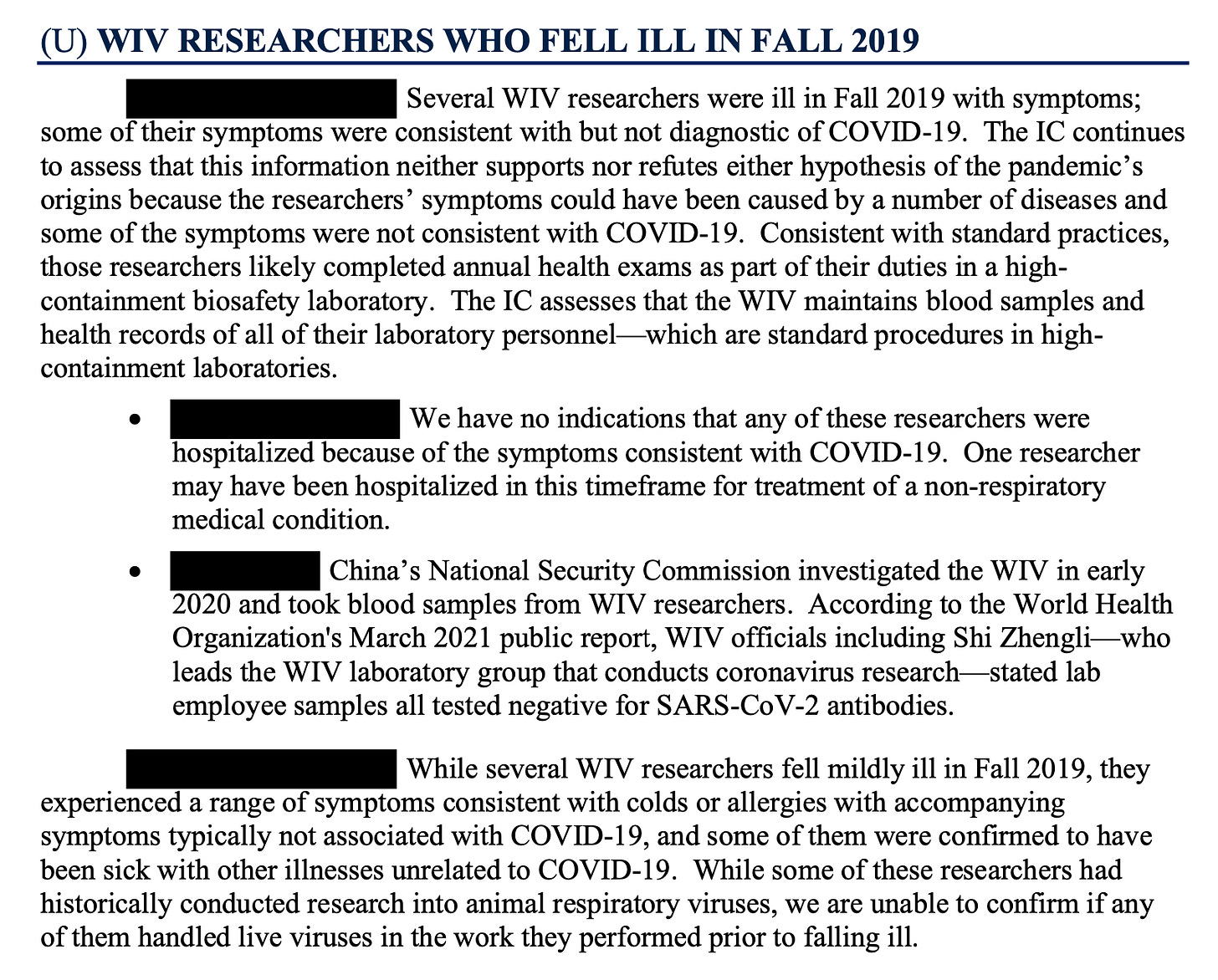Fact checking the new COVID.gov website
From public health resource to politically charged claims
The White House recently turned COVID.gov from a public health resource into a politically charged platform promoting the lab-leak theory and attacking specific scientists and the pandemic response in general.
The new website opens with these five headline claims:
The virus possesses a biological characteristic that is not found in nature.
Data shows that all COVID-19 cases stem from a single introduction into humans. This runs contrary to previous pandemics where there were multiple spillover events.
Wuhan is home to China’s foremost SARS research lab, which has a history of conducting gain-of-function research (gene altering and organism supercharging) at inadequate biosafety levels.
Wuhan Institute of Virology (WIV) researchers were sick with COVID-like symptoms in the fall of 2019, months before COVID-19 was discovered at the wet market.
By nearly all measures of science, if there was evidence of a natural origin it would have already surfaced. But it hasn’t.
These are bold, confident claims to have as headlines on a flagship US COVID website. So let’s fact check them…
Claim 1: The virus possesses a biological characteristic that is not found in nature.
Fact check: The SARS-CoV-2 virus’ features - like the furin cleavage site - may seem unusual but they’ve been found in other natural viruses and it doesn’t mean an artificial origin.
More generally, a novel pandemic virus will always possess a characteristic not currently found in nature… because it’s a novel pandemic virus.
Claim 2: Data shows that all COVID-19 cases stem from a single introduction into humans. This runs contrary to previous pandemics where there were multiple spillover events.
Fact check: Retracing the early unobserved stages of a pandemic is difficult, but some genomic studies have suggested multiple SARS-CoV-2 introductions into humans, not just one, aligning with past pandemics. What’s more, large epidemics don’t always involve multiple spillovers from animal. The 2014 Ebola outbreak likely began with a single introduction into humans.
Claim 3: Wuhan is home to China’s foremost SARS research lab, which has a history of conducting gain-of-function research (gene altering and organism supercharging) at inadequate biosafety levels.
Fact check: Wuhan Institute of Virology (WIV) has previously conducted experiments making ‘chimeric’ viruses, e.g. which combined spike proteins from a newly discovered bat coronavirus with the backbone of the 2003 SARS virus. But the definition of ‘gain-of-function’ research is very narrow (arguably too narrow – see below from United States Department of Health and Human Services in 2017), and much of the debate comes down to interpretation of this definition:
There were also some reported (but unconfirmed) concerns by the US about biosafety at WIV in 2018. Unfortunately, these reports would not make WIV unique – there have been serious safety lapses in other labs, e.g. in the US with smallpox and H5N1.
Claim 4: Wuhan Institute of Virology (WIV) researchers were sick with COVID-like symptoms in the fall of 2019, months before COVID-19 was discovered at the wet market.
Fact check: There were reports of non-specific illness among staff in late 2019, but the US Office of the Director of National Intelligence Assessment in June 2023 concluded these reports were not relevant to the origins debate:
Claim 5: By nearly all measures of science, if there was evidence of a natural origin it would have already surfaced. But it hasn’t.
Fact check: Conclusively identifying the source of an epidemic is always challenging, but there is now substantial evidence pointing towards an animal origin for SARS-CoV-2. I’ve previously written about the gradual and sometimes bumpy emergence of this evidence. In particular, I can understand why certain conflicting announcements (e.g. pointing away from market, suggesting frozen food) made the origins seem ambiguous or contradictory at the time.
From propaganda to productive discussion
There are many aspects of the COVID pandemic the US needs to learn from, not least given the more than one million deaths it has suffered. Faced with the current threat of viruses like H5N1, countries must ensure they can detect and respond to the next pandemic much more effectively. But the misleading, politically-charged content on the new covid.gov website is not a route to the constructive and evidence-based debate we urgently need.






As a retired medic in the UK, I still find this approach to public health by the new administration in the United States difficult to understand on the scientific level. Unfortunately I can see parallels with recent European history from the political perspective. Thanks for an interesting article.
Clearly the change in content is related to the new political atmosphere in Washington, but the previous ‘party line’ was also obviously tainted. Secret funding between the Wuhan lab and Faucci via Ecohealth of research that the Obama administration had banned were deliberately concealed. Social media was pressured to censor alternative narratives.
I have 3 of your books and enjoyed reading them immensely. I read them for the methods explained and examples (I have a mathematical and medical background). Concerning the Covid and medical subjects, to put is quite plainly, I think you believe what you read in the journals and official statistics and then proceed, The validity of the conclusions rest on the validity of the input data, but much of these are a house of cards.
Is the data from China believable? That must be at best doubtful.
The data on death statistics is completely mixed up by the confusion of deaths with Covid and deaths of Covid. Official policy was at some time to label anyone dying with Covid as a Covid death.
The PCR test data relates unrelaibly to Covid because of cross reactivity with other upper respiratory tract viral infections. Long cycle times of the PCR test will detect viral remnants and not active infections
Even the original vaccine publications are suspect, The original Pfizer study published in the NEJM had 3 major flaws such that it should not have been published. The vaccine efficacy could not be assessed from the data published.